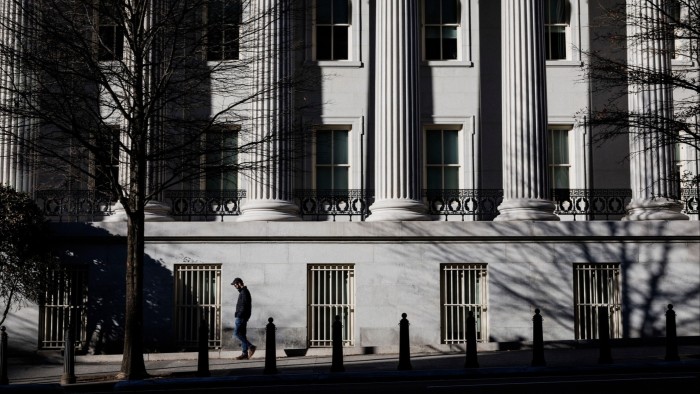Unlock the Editor’s Digest for free
Roula Khalaf, Editor of the FT, selects her favourite stories in this weekly newsletter.
Japanese investors offloaded more than $20bn in international bonds as US President Donald Trump’s tariffs shook markets early this month, in a sign of how the Wall Street turbulence cascaded around the world.
Private institutions, including banks and pension funds, sold $17.5bn of long-dated foreign bonds in the week to April 4 and another $3.6bn over the next seven days, according to preliminary data from Japan’s Ministry of Finance.
Japan holds $1.1tn in US Treasuries across the public and private sectors — the biggest international stockpile in the world — so its transactions are closely monitored and considered a proxy for buying or selling of US government debt.
The recent sell-off marks one of the biggest outflows over any two-week period since records began in 2005.
The shift out of international bonds came after Trump’s “liberation day” tariff announcement on April 2 caused tumult in global stock and bond markets, with the US at the centre of the tremors.
Wall Street’s S&P 500 index plunged 12 per cent in the four trading days after April 2, and then recovered somewhat after Trump paused most of his steep “reciprocal” tariffs for 90 days.
US Treasuries also sustained a severe bout of selling during the market volatility, with yields on 10-year notes surging in the week of April 11 by the most since 2001.
The report from Japan’s finance ministry does not provide details on which long-term bonds were traded by the country’s financial institutions.
But Tomoaki Shishido, senior rates strategist at Japanese bank Nomura, said that “a substantial proportion of [Japan’s] selling is probably either US Treasuries or US agency bonds”. The latter refers to mortgage-backed securities guaranteed by the US government.
“Some selling of foreign bonds could be from Japanese pension funds rebalancing . . . or it could be banks or life insurers reducing their interest rate risk,” he added.
Sales by US asset managers and the unwinding of leverage trades by US and international hedge funds are also likely to have contributed to this month’s sell-off in Treasuries.
But the flurry of international bond sales by Japan is a sign of how the Wall Street turbulence rippled across global markets.
According to several investors, the fall in US equities would have knocked Japanese pension funds’ allocations to international debt and equity out of balance.
As a result, the funds would have been under pressure to sell Treasuries and other US government-backed debt to bring their portfolios back into alignment, they said.
Some of the selling by private Japanese investors could also have been the result of unwinding of hedging strategies employed by Japanese banks, according to analysts.
In these so-called carry trades, investors borrow in low-yielding markets to make bets in ones with higher returns. Because of its relatively low yields, Japan is a common “funding” market for the trades.
But Stefan Angrick, Japan economist at Moody’s Analytics, said that although the volume of Treasuries sold by Japanese funds was substantial, it would not be large enough to fully account for the yield rises in the first two weeks of April.
“The headline figures may look chunky, but in bond market terms, they’re barely a ripple,” said Angrick, who noted that the US Treasury market turns over close to $1tn on an average day.
https://www.ft.com/content/953f1970-ae77-460b-aa4b-90dc63d2ddd4


